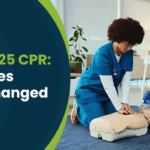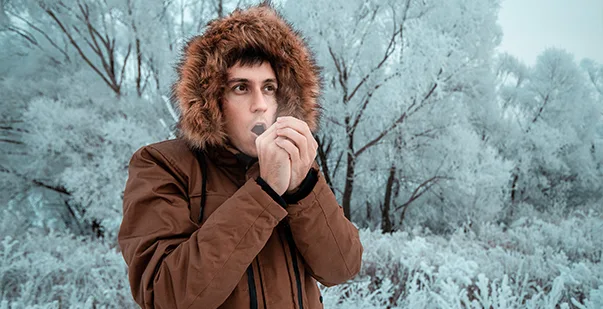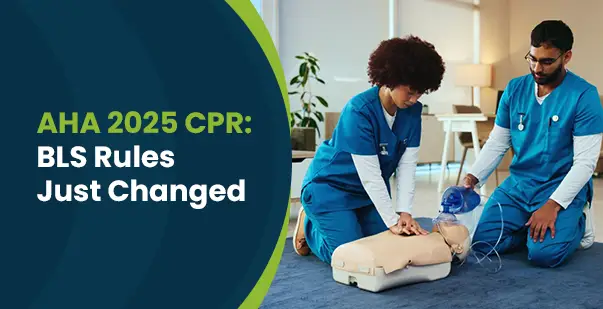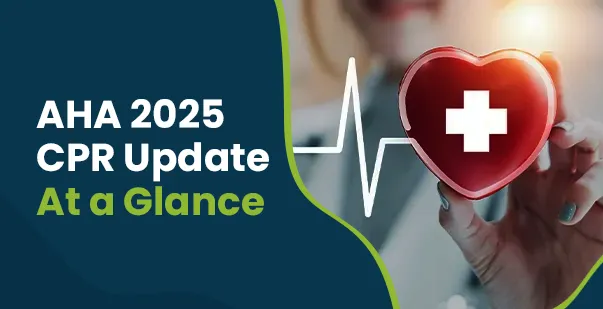Hypothermia, characterized by an abnormally low body temperature, is a severe condition often underestimated in its severity. Recent research showed a striking statistic: the death rate from hypothermia rises dramatically with age, from 1.7% in patients aged 18-20 to 45% in those over 80.
Moreover, hypothermia is linked with significantly higher death, which indicates the weakness of old individuals to this kind of complication. Every individual, including the caretakers, has to be sufficiently informed about hypothermia, its symptoms, causes, and the many treatments.
Are you aware of the most recent developments in hypothermia therapy? Explore this thorough guide to learn important information and shocking new perspectives on this potentially fatal condition.
What is Hypothermia?
Hypothermia results when your body loses heat faster than it can produce. The definition of hypothermia is simple: a core body temperature below 95°F (35°C). Many people believe that it only occurs in severe cold temperatures. However, this is untrue. Hypothermia may develop in mild weather, particularly if you are wet or exposed to wind. It’s not just an outdoor problem either. In poorly heated houses, indoor hypothermia may strike the elderly or sick.
Another myth is that hypothermia takes hours to develop. Realistically, it can establish itself rapidly, particularly in water. Hypothermia doesn’t always feel chilly at first. A drop in body temperature might cause you to feel confused and overheated, which adds even greater risk.
Causes of Hypothermia
Many times, a mix of environmental variables and physiological weaknesses leads to hypothermia. Intervention and prevention depend on an awareness of these factors. Let’s explore the primary causes of this alarming decline in body temperature.
Cold Weather Exposure
Extended exposure to cold weather is the most common factor causing hypothermia. This includes getting trapped in cold rain or snow, remaining outside for long stretches without appropriate clothes, or plunging into cold water.
Inadequate Clothing
Wearing clothes unsuitable for cold conditions significantly increases the risk of hypothermia. Wet clothes are particularly problematic as they quickly absorb heat from the body and lose their insulating properties. Tight clothes may also be an issue as they reduce the warm air barrier between the fabric and skin.
Living Conditions
Particularly for at-risk populations like the elderly and young children, poor heating in houses is a major concern. Sometimes, individuals suffer hypothermia indoors if room temperatures are consistently too low.
Physiological Conditions
Internal physiological factors can greatly influence one’s sensitivity to hypothermia. These conditions compromise the body’s ability to regulate temperature efficiently, making certain individuals more susceptible to cold-related illnesses, even in seemingly benign environments.
Medical Conditions
Certain medical conditions increase the risk of hypothermia. Diabetes can impair blood circulation and temperature regulation. Hypothyroidism lowers the body’s metabolic rate, reducing heat production. Sepsis can sometimes result in hypothermia rather than fever. These conditions can make people more sensitive to cold, even at relatively moderate temperatures.
Must Read: Chemical Burns: First Aid Treatment and Prevention Tips
Signs and Symptoms of Hypothermia
Quick intervention depends on an awareness of the signs of hypothermia. The symptoms progress as body temperature drops, becoming more dangerous over time. There are three stages of hypothermia – mild, moderate and severe. Let us explore them one by one:
Mild
The first phases of hypothermia are modest. Identifying these early warning signals is very important as they provide the greatest opportunity for fast action and avoidance of more severe hypothermia symptoms.
Shivering
Often, the first clear sign of hypothermia is shivering. To create heat, your body starts this automatic muscular activity. It might initially be little and easy to overlook. Don’t brush it off, especially if you’re in a cold environment. Your body is expressing its difficulty in maintaining its core temperature by constantly shaking.
Cold and Pale Skin
As your body redirects blood flow to essential organs, your skin may feel chilly and become pale. Your fingers, toes, ears, and lips—among other exposed areas—clearly show the change. Changes in skin texture and appearance are early warning indicators of your body losing heat quicker than it can generate.
Mild Confusion
Early on in hypothermia, you might find it difficult to focus or think properly. This confusion is subtle at first. You may find it difficult to do routine tasks or make decisions. Although stress or tiredness might easily explain this, in a chilly setting, it may indicate the start of hypothermia. This mental fog is the brain’s response to a declining core temperature.
Moderate Symptoms
The body’s efforts to preserve core temperature show more as hypothermia advances. These mild symptoms need a quick response as they indicate a significant decline in body temperature.
Intense Shivering
Shivering becomes more extreme and obvious as hypothermia progresses. Your body is trying desperately to create heat through this strong shaking. Your core temperature has clearly decreased dramatically. Shivering by itself won’t warm you up at this point. Quick action is necessary to stop further heat loss.
Mumbles, Fumbles, Stumbles, and Grumbles
This catchy phrase encapsulates the key signs of worsening hypothermia.
- Mumbles: Slurred speech or trouble clearly expressing yourself. Difficulty putting together logical sentences.
- Fumbles: Clumsy coordination. Simple tasks, like buttoning a coat, become difficult.
- Stumbles: Difficulties walking steadily. Gait might become unstable or erratic.
- Grumbles: Increased irritability or complaints. Feeling unfairly upset or annoyed.
Severe Symptoms
Hypothermia becomes life-threatening at this crucial point. The body’s systems begin to shut down, and without urgent medical intervention, the risk of permanent damage or death increases dramatically.
Cessation of Shivering
Ironically, stopping shivering is a dangerous sign. Your body no longer has the energy to shiver. The hypothermia temperature has dropped to a critical level. Your body is conserving the little energy it still has for essential organ operation.
Blue or Puffed-up Skin
In severe hypothermia, the skin may become blue, especially in the extremities. Cyanosis, the blue color, results from insufficient oxygen intake by the body. The skin could also appear puffy or bloated, especially on the face and arms.
Severe Confusion or Irrational Behavior
Mental capacity suffers greatly at this point. You might not recognize familiar people or places. Irrational behavior is common. Paradoxical undressing is the phenomenon wherein some hypothermia sufferers have been seen to remove clothes deliberately. This odd behavior results from the body’s disturbed temperature control.
Weak Pulse and Slow, Shallow Breathing
As hypothermia advances, your heart rate and respiration slow down. Your pulse starts to fade and is hard to feel, and your breathing becomes shallow and irregular. These variations mirror your body’s slowing metabolism in an effort to conserve energy.
Loss of Consciousness
In extreme circumstances, severe hypothermia causes unconsciousness. The individual may seem lifeless and lose consciousness. Rescuers should continue resuscitation efforts until the victim is warmed.
Must Read: How Many CE Hours Is BLS Worth?
How to Treat Hypothermia?
Hypothermia must be treated quickly and with caution. The degree of the ailment influences the method. Let’s explore the main actions and strategies performed to fight potentially life-threatening conditions.
Initial Steps for Treatment
In cases of hypothermia, early steps are very important. These first phases concentrate on stopping additional heat loss and preparing the body for rewarming, enabling more complex treatment approaches.
Move to a Warm Environment
Moving the patient carefully out of the cold is a very important stage in hypothermia treatment. Find a protected spot free of snow, rain, or wind. This basic activity starts the healing process and helps stop further heat loss. If you’re outside, a tent or a naturally occurring cover like a cave will suffice. Inside, if possible, relocate to a heated room.
Remove Wet Clothing
Wet clothes rapidly draw heat away from the body. Carefully remove any wet or damp clothes from the individual. Be cautious; in extreme cases, sudden movements might set off dangerous cardiac rhythms. After the wet clothing is removed, cover the victim with dry, warm blankets or robes. If blankets are not available, use any dry cloth, such as coats or even newspapers, as insulation.
Insulate from the Ground
The cold ground may rapidly drain body heat. It is important to insulate the individual from this surface. Build a barrier using blankets, sleeping bags, or other items. Pine boughs or leaves may serve as emergency insulation in outdoor environments. Minimizing conductive heat loss means avoiding direct contact between the person and the cold surface.
Rewarming Techniques
Many rewarming techniques may be used after initial actions are taken. These methods, all meant to increase the body’s core temperature safely, vary from passive measures for mild instances to more vigorous treatments for severe hypothermia.
Passive External Rewarming
For mild hypothermia, this approach works well. It depends on the body’s capacity for producing heat of its own. Wrap the person in warm, dry blankets or clothing, focusing on covering the head and neck. These areas lose heat quickly. Make the surroundings in a way to trap body heat. Safe and efficient for mild instances, this method seeks to warm the body at 0.5 to 2 °C each hour.
Active External Rewarming
More vigorous warming is required for mild to severe hypothermia. A primary tool in this method is a heating pad. Use them on the groin, chest, and neck. These regions have large blood vessels close to the skin, facilitating efficient core warming. To prevent burns, take great care not to lay heating pads directly on the skin. Warm air blowers can also help. These devices assist the body in warming up by constantly moving hot air around it, gradually increasing the ambient temperature.
Active Internal Rewarming
Cases of extreme hypothermia can call for medical intervention, including aggressive internal rewarming. One way is with warmed IV fluids. Heated to body temperature, these fluids increase the core temperature from the inside. Another technique is heated and humidified oxygen. It prevents further cooling of the body through respiration by warming the air the individual inhales. In severe cases, doctors might use peritoneal lavage, which involves gently heating the body’s core by delicately injecting warmed fluids into the abdominal cavity.
Monitoring and Emergency Response
In extreme situations, quick response and continuous alertness is important. This phase involves careful monitoring to prevent complications during the rewarming process and to ensure vital life-saving actions are taken.
CPR
In extreme circumstances where the victim is unconscious or has no pulse or breathing, immediate CPR is very vital. Postoperative hypothermia, also known as POE hypothermia, can lead to such dangerous conditions. Start chest compressions and rescue breaths if you are trained. Continue CPR until professional medical help arrives. Extended CPR efforts may be necessary.
Avoid Rapid Rewarming
While it may seem reasonable to warm someone as quickly as possible, rapid rewarming can be harmful. Techniques like heating lamps or hot baths might shock the cardiovascular system and cause cardiac arrhythmias. This occurs when cold blood from the limbs returns to the core, further lowering the core temperature. The best approach to treating hypothermia is slow, controlled rewarming.
Final Word on Hypothermia Awareness
Hypothermia, a serious condition, can occur under many different circumstances and often catches people off guard. Reducing its severe effects depends on awareness and education. Knowing the clues, symptoms, causes, and therapy strategies allows us to guard others better and ourselves from this silent menace. Share this with friends and family, particularly high-risk ones. Whether you are caring for vulnerable people at home or organizing an outside adventure, take preventive actions very seriously. Remember, hypothermia may strike anybody in daily environments as much as in the wilderness. Keep warm; keep informed; keep ready. Your knowledge can save lives.









